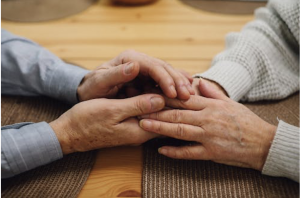
October is Domestic Violence Awareness Month. While domestic violence occurs in all communities, many people have misconceptions about what domestic violence is and who experiences it. We’re here to debunk some of these misconceptions.
#1: Hitting someone is the only type of domestic violence.
Wrong, hitting someone is just one type of domestic violence. Domestic violence is about an abuser exercising power and control over another person. There are many ways that abusers exert power and control over others and as such, domestic violence includes many different types of abuse. Domestic violence includes physical abuse. Hitting another person is just one form of physical abuse. Other types of physical abuse include strangulation, shoving, kicking, pushing, or pulling hair.
Domestic abuse includes making stalking or making repeated and unwanted contact with someone, like repeated phone calls, text messages, or visits to that person’s home or workplace. Domestic violence can also include isolating someone from their friends, family, or other forms of support. Making someone do something through force, threats, or intimidation, preventing someone from accessing or earning money, abuse of a pet or animal, destruction of property, abuse of children, and preventing someone from getting food or meeting basic needs all constitute domestic violence. In addition, domestic violence can occur when someone tracks, controls, monitors or blocks another person’s movements or communications. Lastly, making threats based on a person’s immigration status can also constitute domestic violence.
#2: Domestic violence only occurs between two people who had an intimate (married or dating) relationship.
Domestic violence can actually occur between people in a wide variety of familial, marital, or other intimate partner relationships. Domestic violence includes abuse by a spouse, former spouse, domestic partner, former domestic partner, or someone you are dating, used to date, or were engaged to. Abuse by a child, grandchild, grandparent, or sibling can also constitute domestic violence. If you have a child with another person, abuse by that other person can also be domestic violence.
#3: Domestic violence only occurs to younger people.
People of all ages experience domestic violence, including seniors. Domestic violence against seniors often overlaps with elder abuse. Victims of both domestic violence and elder abuse can apply for a restraining order against their abuser to prevent future abuse. There are differences between elder abuse and domestic violence. Unlike domestic violence, elder abuse includes neglect, isolation, abandonment, or abduction of an elder. Financial abuse is also a form of elder abuse involving the wrongful taking or use of money, property, or other assets belonging to an elder.
If you or someone you know is experiencing abuse, call Contra Costa Senior Legal Services for assistance at (925) 609-7900. The Contra Costa County Elder Abuse Prevention Project can help older adults experiencing abuse. Visit http://cocoelderjustice.org/ to learn more.
Click here to learn more about domestic violence and restraining orders.